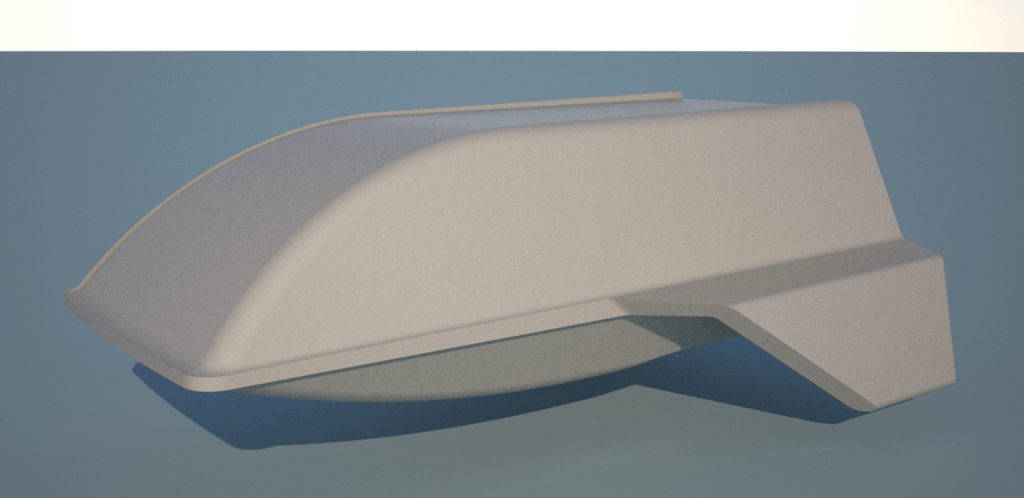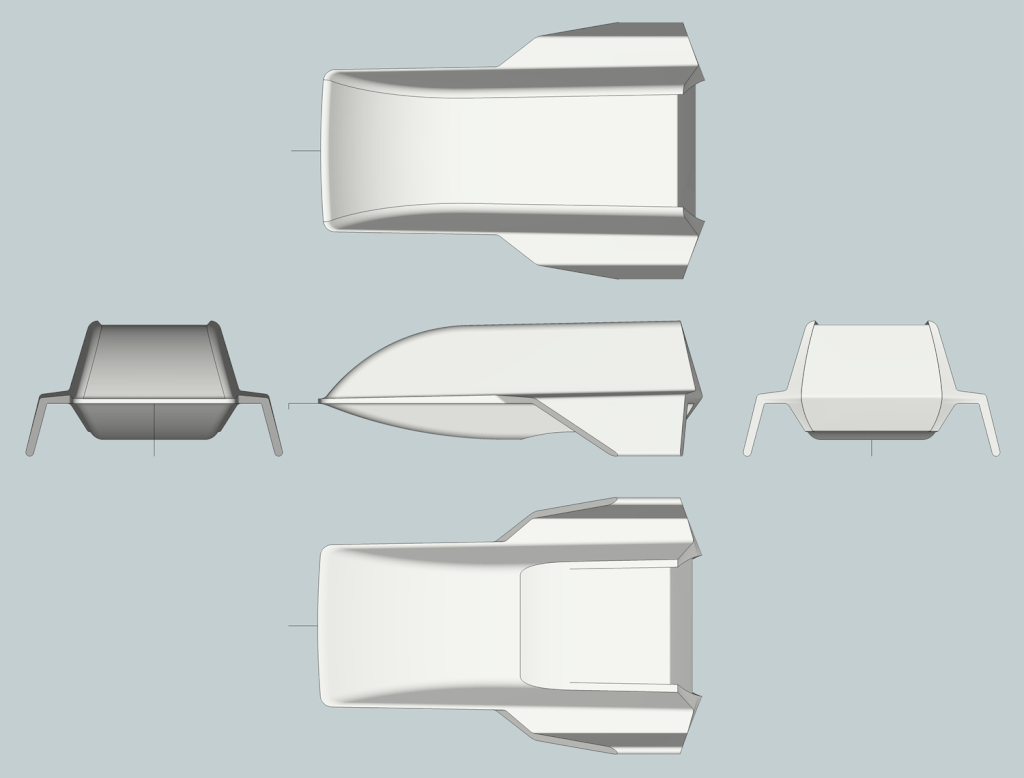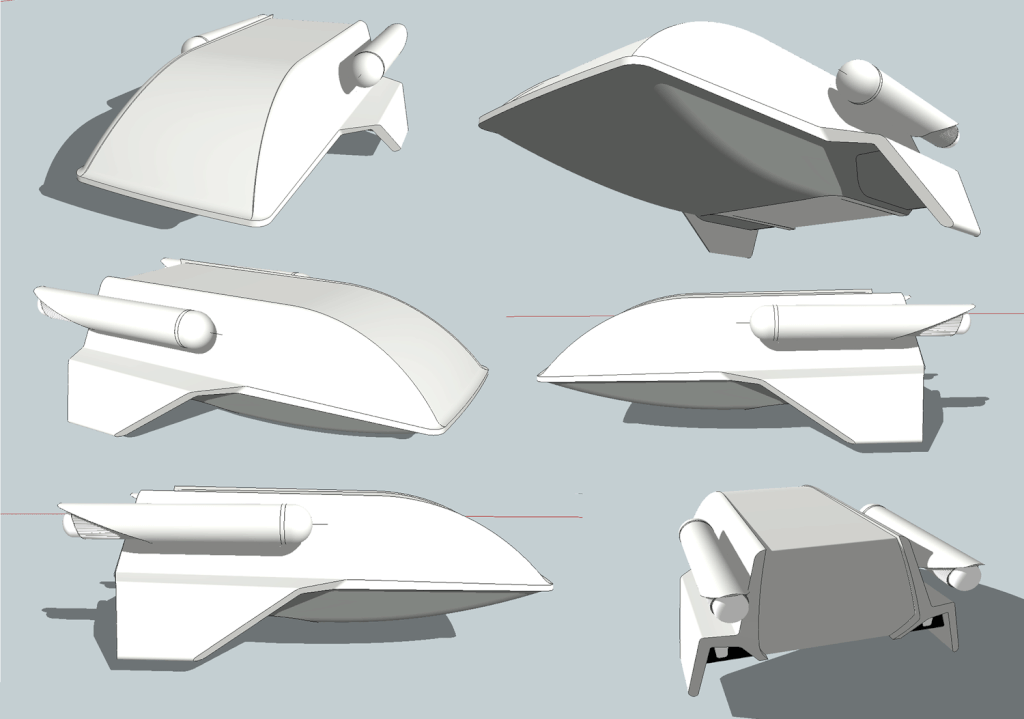-
Welcome! The TrekBBS is the number one place to chat about Star Trek with like-minded fans.
If you are not already a member then please register an account and join in the discussion!
You are using an out of date browser. It may not display this or other websites correctly.
You should upgrade or use an alternative browser.
You should upgrade or use an alternative browser.
Conjectural shuttlecraft design (TOS era)...
- Thread starter Warped9
- Start date
Some progress.
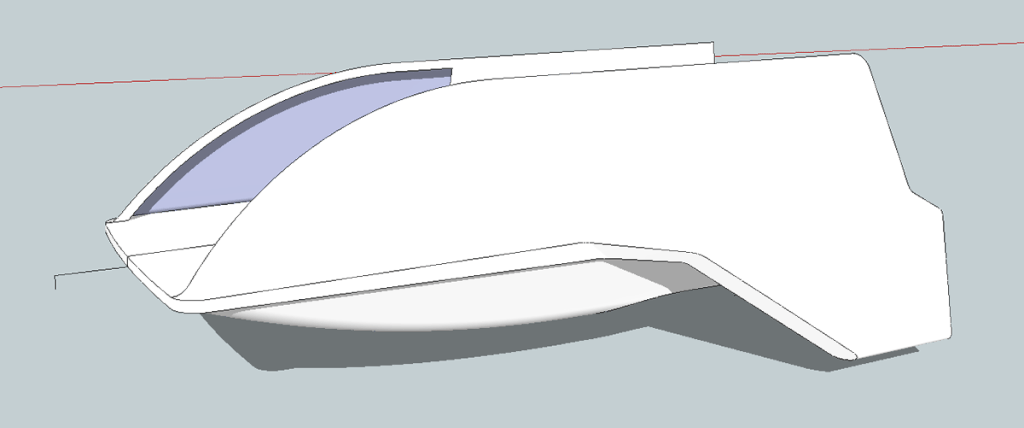
The background for this design idea goes back some years when I grew frustrated with trying to make the TAS shuttlecraft look more TOS like. At the time I ditched the TAS concept totally and kept the bare bones elements in mind then began to play with ideas that came to me. The idea was to go a step further than just creating a Class F variant (such as is seen in my TOS Class F thread) and explore the possibility of something that just might have been possible if TOS had some extra time and money in the later seasons.
I did use the Class F as the starting point and then keeping how the fullsize mockup was built I tried to speculate on what else just might have been possible for them to give Starfleet some variety of design. This is meant to be roughly the same size as the Class F but with a bit more interior space. The crew access hatch will be in the rear (as it is with the TAS design), the impulse engines will be under the wing shaped stabilizers and the warp nacelles will be on the upper aft part of the hull (again somewhat similar to the TAS design).
This design was not a concious effort to point to TMP style aesthetics. I was trying to imagine something similar yet updated from the Class F, something going in a bit different design direction.
Stay tuned.

The background for this design idea goes back some years when I grew frustrated with trying to make the TAS shuttlecraft look more TOS like. At the time I ditched the TAS concept totally and kept the bare bones elements in mind then began to play with ideas that came to me. The idea was to go a step further than just creating a Class F variant (such as is seen in my TOS Class F thread) and explore the possibility of something that just might have been possible if TOS had some extra time and money in the later seasons.
I did use the Class F as the starting point and then keeping how the fullsize mockup was built I tried to speculate on what else just might have been possible for them to give Starfleet some variety of design. This is meant to be roughly the same size as the Class F but with a bit more interior space. The crew access hatch will be in the rear (as it is with the TAS design), the impulse engines will be under the wing shaped stabilizers and the warp nacelles will be on the upper aft part of the hull (again somewhat similar to the TAS design).
This design was not a concious effort to point to TMP style aesthetics. I was trying to imagine something similar yet updated from the Class F, something going in a bit different design direction.
Stay tuned.
I know you said it's not what you were intentionally trying to evoke, but the second render immediately brought to mind the lines of the shuttlecraft they made for The Final Frontier. I'll be interested to see where you take this.
The TFF design is something of a retro design after the shuttlecraft seen in TMP. In TMP the shuttlecraft we see in the hangar area look like smaller versions of the one Spock traveled in. They were an essentially simple shape (with losts of detail) but they were quite different from what we'd seen before. The implication also seemed to be that the TMP design needed to have nacelles fitted to it for it to have warp capability.
The TFF design looks like much closer to what we might have expected in updating the TOS shuttlecraft into the movie era. The shape is a bit more modern and we see the return of the familiar nacelle arrangement. That said the interior look rather bare bones and looked more like a basic transport rather than the way we saw the shuttlecraft fitted in TOS. Mind you we might have been seeing one version of the interior in TFF and perhaps it could be fitted with a more familiar seating arrangement.
At some point I'd like to model the TMP and TFF designs.
I think one of the most distinctive features of the TAS design is having the nacelles mounted up on the hull rather than slung belong. It evokes the idea of an executive jet that his its engines mounted in similar fashion. The elongated bow on the TAS craft is also a waste of space visually. Even if you try to shorten you can only go so far before losing it as a recogizable and familiar feature. That was what my first 3D model of the design was primarily about--scaling elements back so it looked to make more sense while still being recognizable. But that extended bow is still a lot of wasted space.
So I tried a different direction: what if I take the Class F design and try pushing it into something evoking the TAS design? The nacelles will be mounted on the upper part of the hull, but they will be a new design that looks more advanced and hints at future evolution without looking TMP like.The stabilizers were made a bit more wing like and extended downward to serve as landing supports somewhat reminiscent of the large landing supports on the TAS design. There will be a landing strut under the bow as well. The streamlined shape is meant to convey an idea of speed and maneuverability. The cabin's forward bulkhead can be pushed forward although not all the way as the bow gets narrow. That means there's room for mechanicals in the nose (sensor arrays and navigational deflector and such) without a section protruding excessively outward to no purpose.
The TAS design has another shortcoming: there's no obvious place for the impulse engines given the access hatch is in the rear. If you lengthen the hull to allow for a side access hatch then you're really changing the design from what we saw and it makes it even harder to shorten the craft's length into something more manageable. My solution was to put an antigravity pod under the scallop under the hull between the landing struts. Shuttlecraft have to have some form of antigravity anyway so I thought it was an unobtrusive solution while not impacting the overall design. On the craft I'm modeling in this thread I can mount impulse engines under the stabilizers and covered by the support struts. Again it's unobtrusive and integrates into the design while allowing me to retain the access hatch located in the rear.
Just as I did when first working out a fully integrated Class F design I try to allow for a credible amount of space between the exterior and interior hulls for my designs. I think it only makes sense for a more realistic ship design. Also a double hull structure strikes me as safer in the event of an exterior hull breach.
The TFF design looks like much closer to what we might have expected in updating the TOS shuttlecraft into the movie era. The shape is a bit more modern and we see the return of the familiar nacelle arrangement. That said the interior look rather bare bones and looked more like a basic transport rather than the way we saw the shuttlecraft fitted in TOS. Mind you we might have been seeing one version of the interior in TFF and perhaps it could be fitted with a more familiar seating arrangement.
At some point I'd like to model the TMP and TFF designs.
I think one of the most distinctive features of the TAS design is having the nacelles mounted up on the hull rather than slung belong. It evokes the idea of an executive jet that his its engines mounted in similar fashion. The elongated bow on the TAS craft is also a waste of space visually. Even if you try to shorten you can only go so far before losing it as a recogizable and familiar feature. That was what my first 3D model of the design was primarily about--scaling elements back so it looked to make more sense while still being recognizable. But that extended bow is still a lot of wasted space.
So I tried a different direction: what if I take the Class F design and try pushing it into something evoking the TAS design? The nacelles will be mounted on the upper part of the hull, but they will be a new design that looks more advanced and hints at future evolution without looking TMP like.The stabilizers were made a bit more wing like and extended downward to serve as landing supports somewhat reminiscent of the large landing supports on the TAS design. There will be a landing strut under the bow as well. The streamlined shape is meant to convey an idea of speed and maneuverability. The cabin's forward bulkhead can be pushed forward although not all the way as the bow gets narrow. That means there's room for mechanicals in the nose (sensor arrays and navigational deflector and such) without a section protruding excessively outward to no purpose.
The TAS design has another shortcoming: there's no obvious place for the impulse engines given the access hatch is in the rear. If you lengthen the hull to allow for a side access hatch then you're really changing the design from what we saw and it makes it even harder to shorten the craft's length into something more manageable. My solution was to put an antigravity pod under the scallop under the hull between the landing struts. Shuttlecraft have to have some form of antigravity anyway so I thought it was an unobtrusive solution while not impacting the overall design. On the craft I'm modeling in this thread I can mount impulse engines under the stabilizers and covered by the support struts. Again it's unobtrusive and integrates into the design while allowing me to retain the access hatch located in the rear.
Just as I did when first working out a fully integrated Class F design I try to allow for a credible amount of space between the exterior and interior hulls for my designs. I think it only makes sense for a more realistic ship design. Also a double hull structure strikes me as safer in the event of an exterior hull breach.
Last edited:
Technically, those never showed up in the actual movie, just in Probert's concept painting. But I'm looking forward to seeing your concept develop just the same!In TMP the shuttlecraft we see in the hangar area look like smaller versions of the one Spock traveled in. They were an essentially simple shape (with losts of detail) but they were quite different from what we'd seen before. The implication also seemed to be that the TMP design needed to have nacelles fitted to it for it to have warp capability.
I don't know how it happened, but I got the forward part of the lower hull slightly wrong. It's not much, but it's a bit more raked back than I initially planned. There should be a bit more curvature there. It's a slight difference and I'm not inclined to go back and correct it at this point. If I get around to making line drawings of this then I can correct it there.
But like I said it's only a slight difference.
But like I said it's only a slight difference.
Cool...
but it looks alot like Madman's PA Shuttle, but with a more rounded cockpit : )
http://madshipyard.com/ThePrimeAlternative/auxilary.htm
but it looks alot like Madman's PA Shuttle, but with a more rounded cockpit : )
http://madshipyard.com/ThePrimeAlternative/auxilary.htm
Very, very cool.
I like it, but the nacelle placement seems a little too high for me.
I wonder what it would look like if the flat part of the wings were a little wider, and the nacelles were connected to them, instead of the main hull.

-Ricky
I wonder what it would look like if the flat part of the wings were a little wider, and the nacelles were connected to them, instead of the main hull.

-Ricky
Amusing. aridas thinks the nacelles are too low. (-:
Attaching the nacelles to the stabilizer/supports would simply look more conventional. Not what I was hoping for.
Here is an early take on the present idea as I began to work toward what I'm presently modeling.
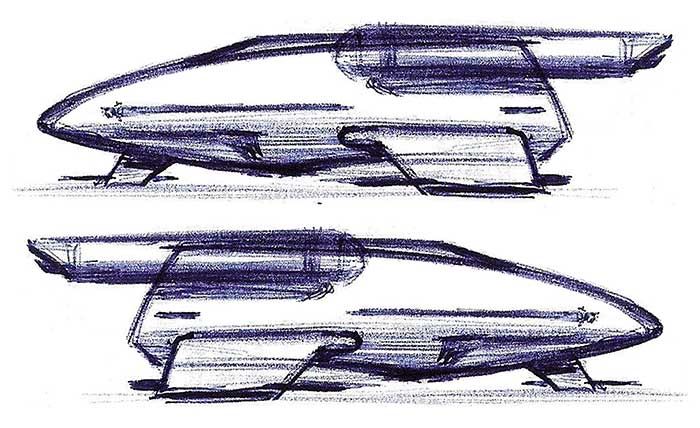
I also had size constraints in mind with this design. I wanted it to be roughly the same size as my Class F at about 26-27 ft. so it could be accommodated aboard a starship. This is a rough layout in terms of interior spacing.
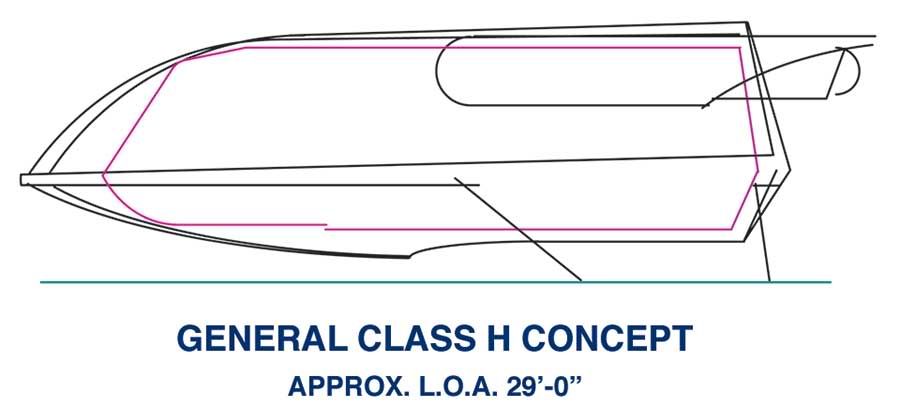
And here is a basic size comparison that helped guide me.
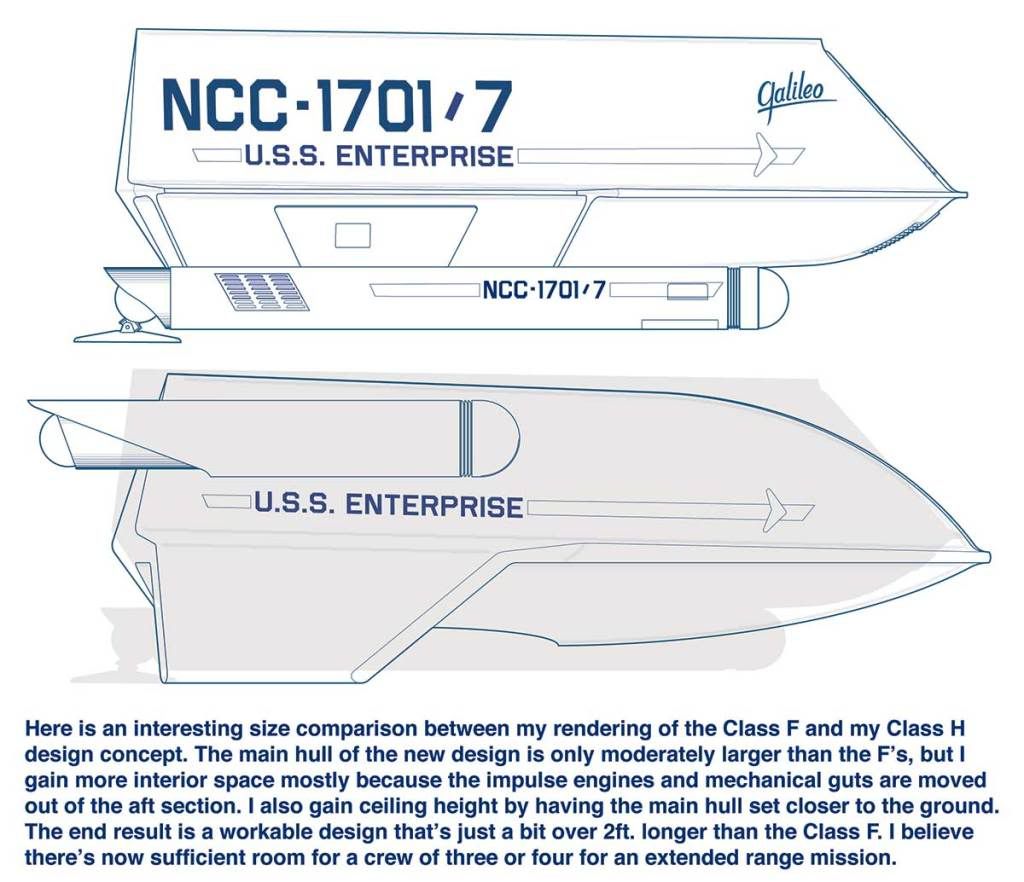
Initial concept for the nacelles that I am modifying as I go.
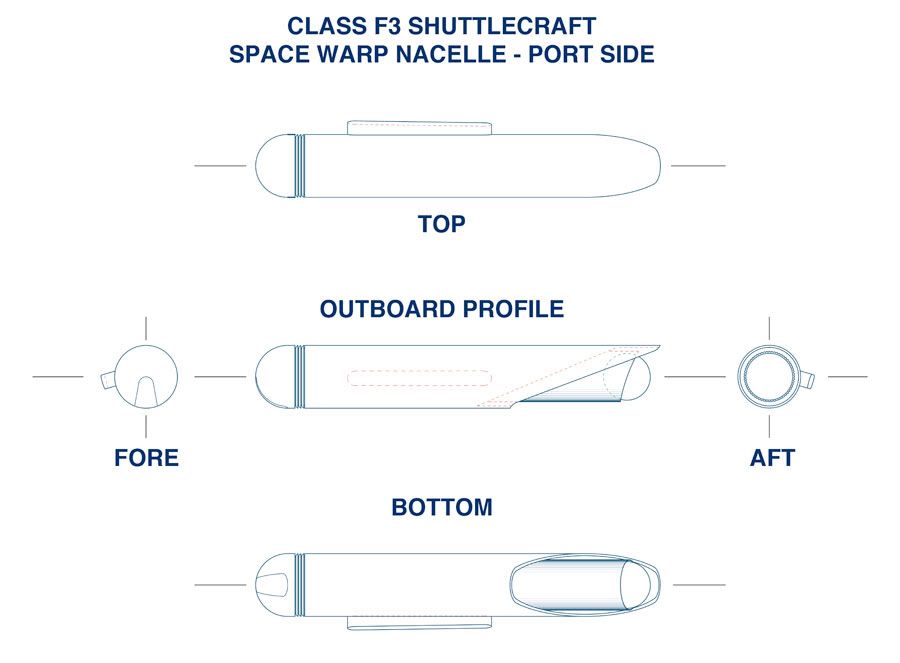
We know MJ initially envisioned something more exotic for his shuttlecraft, but time and money were a serious constraint. Enter AMT that alleviated the money issue, but there was still a time constraint and the real challenge of construction. So AMT came up with a concept they thought could work and they could build within the time allowed. MJ gave them some feedback and signed off on it. The result was the Galileo mockup--one of the best looking fullsize mockups for an SF vehicle on television and maybe even film. It wasn't perfect and it still had compromises, but it sold the idea very well. One can argue that the Class F design isn't as exciting as it might have been, but taken in context I think it's actually a very good design for its purpose. Its deceptively simple shape helps lend it a measure of utility in design. In context of the Star Trek universe we can buy the conceit that the shuttlecraft (like the Enterprise) looks the way it does largely out of form follows function--it looks the way it does to get the job done effectively.
Not SF hardware often goes the way of form needing to be appealing first and then rationalized later--otherwise most SF hardware would look little removed from what NASA dreams about or actually builds. For far future SF that's not sexy enough. We like to think that far future hardware could be as far removed from what we familiar with as a jet fighter is removed from 17th century sailing ship. To anyone from over a hundred years or more in the past a modern jet fighter would look impossibly alien. Now you can do that easily when you're illustrating a book cover or describing something in print or even fashioning something for a big budget sci-fi feature, but when you're faced with very real time and budget and resource constraints of weekly television production then you have to scale back your expectations and get clever in going for what you can get.
Today anyone who critices what TOS looks like is out of their fucking mind because it speaks of a complete lack of appreciation for what the producers were faced with. GR and MJ and the rest were trying to build a far future world on the constraints of 1960's television with only pencil and paper, wood and some metal, glue and paint and a few lights. They were not futurists or professional SF illustrators, but television people. In light of all the obstacles they faced they did an outstanding job.
As fans we like to imagine what might have existed "beyond the bulkhead" in the greater universe that TOS depicted. To that end we imagine exotic aliens and exotic looking ships beyond what we've already seen. Some go overboard and imagine things that never would have been made even if the budget and resources allowed. But some also make the effort to remain at least somewhat consistent with what was already seen or inferred on the screen. And from there it becomes subjective interpretation (as evidenced by the endless discussion regarding the hangar facilities).
And so here we are.
Attaching the nacelles to the stabilizer/supports would simply look more conventional. Not what I was hoping for.
Here is an early take on the present idea as I began to work toward what I'm presently modeling.

I also had size constraints in mind with this design. I wanted it to be roughly the same size as my Class F at about 26-27 ft. so it could be accommodated aboard a starship. This is a rough layout in terms of interior spacing.

And here is a basic size comparison that helped guide me.

Initial concept for the nacelles that I am modifying as I go.

We know MJ initially envisioned something more exotic for his shuttlecraft, but time and money were a serious constraint. Enter AMT that alleviated the money issue, but there was still a time constraint and the real challenge of construction. So AMT came up with a concept they thought could work and they could build within the time allowed. MJ gave them some feedback and signed off on it. The result was the Galileo mockup--one of the best looking fullsize mockups for an SF vehicle on television and maybe even film. It wasn't perfect and it still had compromises, but it sold the idea very well. One can argue that the Class F design isn't as exciting as it might have been, but taken in context I think it's actually a very good design for its purpose. Its deceptively simple shape helps lend it a measure of utility in design. In context of the Star Trek universe we can buy the conceit that the shuttlecraft (like the Enterprise) looks the way it does largely out of form follows function--it looks the way it does to get the job done effectively.
Not SF hardware often goes the way of form needing to be appealing first and then rationalized later--otherwise most SF hardware would look little removed from what NASA dreams about or actually builds. For far future SF that's not sexy enough. We like to think that far future hardware could be as far removed from what we familiar with as a jet fighter is removed from 17th century sailing ship. To anyone from over a hundred years or more in the past a modern jet fighter would look impossibly alien. Now you can do that easily when you're illustrating a book cover or describing something in print or even fashioning something for a big budget sci-fi feature, but when you're faced with very real time and budget and resource constraints of weekly television production then you have to scale back your expectations and get clever in going for what you can get.
Today anyone who critices what TOS looks like is out of their fucking mind because it speaks of a complete lack of appreciation for what the producers were faced with. GR and MJ and the rest were trying to build a far future world on the constraints of 1960's television with only pencil and paper, wood and some metal, glue and paint and a few lights. They were not futurists or professional SF illustrators, but television people. In light of all the obstacles they faced they did an outstanding job.
As fans we like to imagine what might have existed "beyond the bulkhead" in the greater universe that TOS depicted. To that end we imagine exotic aliens and exotic looking ships beyond what we've already seen. Some go overboard and imagine things that never would have been made even if the budget and resources allowed. But some also make the effort to remain at least somewhat consistent with what was already seen or inferred on the screen. And from there it becomes subjective interpretation (as evidenced by the endless discussion regarding the hangar facilities).

And so here we are.
Last edited:
I like Warped 9's concept. The engine arrangement reminds me of a reverse of the engines on the shuttlecrafts seen in TMP5; instead of the warp engines on the bottom and the impulse engines on top, here we see the warp nacelles mounted outboard-topside and the impulse engines tucked under the wings. Neat.
The real bear it imagining an interior that would be compatible with so-called "long range" missions, such as all the facilities and creature comforts needed to accommodate a crew of pilots and specialists on a multi-day deep-space expedition. This ship would be more like the Eagles of SPACE: 1999 or the Runabouts of DEEP SPACE NINE than the Class F could ever be.
The real bear it imagining an interior that would be compatible with so-called "long range" missions, such as all the facilities and creature comforts needed to accommodate a crew of pilots and specialists on a multi-day deep-space expedition. This ship would be more like the Eagles of SPACE: 1999 or the Runabouts of DEEP SPACE NINE than the Class F could ever be.
^But it's Star Trek... nobody goes to the bathroom! 
But seriously, I love the design and the thought and planning that's gone into it. This is a practical, sensible design in line with the rest of what we saw on TOS, and I can perfectly imagine it sitting on the soundstage next to the Galileo, if only there had been money and time.

But seriously, I love the design and the thought and planning that's gone into it. This is a practical, sensible design in line with the rest of what we saw on TOS, and I can perfectly imagine it sitting on the soundstage next to the Galileo, if only there had been money and time.
Folks have asked about the interior. I don't know yet how detailed I will get. But in general layout it won't be radically different than the interiors I made for the Class F and H shuttlecraft designs. So it will have the similar capability to be refitted inside for specific mission requirements.
Because of the shape of the nose I'm carrying over what I did with the other designs in that there are no actual forward viewports. Instead you have a 3D display monitor on the forward bulkhead that mimics a large viewport (or any display required) exactly like that seen on the Enterprise bridge. By this time this is proven technolgy and no one would think anything odd about. This craft is, like other shuttlecraft we've seen, a small scale starship capable of extended interstellar flight so it has many of the same elements albeit on a smaller scale. Because of the shape of the bow you can't bring the interior cabin all the way to the nose anyway so even if you have viewports you're going to be seated a long way from them. That would be a lot of wasted space so better to use the space more effectively and fill it with sensor arrays and navigational deflectors and systems.
The interior cabin will somewhat mimic the shape of the exterior hull except it will have walls parallel running fore to aft rather than angling outward (at one degree on each side) like the exterior hull does. Also the inner walls will likely be less steeply angled than the exterior hull. All this contributes to sufficient space between hulls for mechanicals and storage compartments similarly as I did with the Class F design.
When I initially designed this craft I worked out the basic layout literally right on top of the Class F in order to help constrain the overall size. Because of the shape and the rearranging of some elements it affords a bit more interior room than the Class F. Seen in profile the Class F looks like it should be roomy given it's rather box like shape, but you lose interior space because of the sloping roof, the impulse engines in the rear and the aft hull cutout under the impulse engines. By putting the impulse engines under the stabilizers and moving the access hatch aft I reclaim that lost space.
Slowly adding more detail, particularly to the nacelles. I've also raised the nacelles a bit by aridas' suggestion (although not as much as I suspect he was thinking). (-: I tried them higher but I just didn't think it looked right on this design. I also rounded off the trailing edge of the roof more and I changed the aft nacelle domes more to my liking.
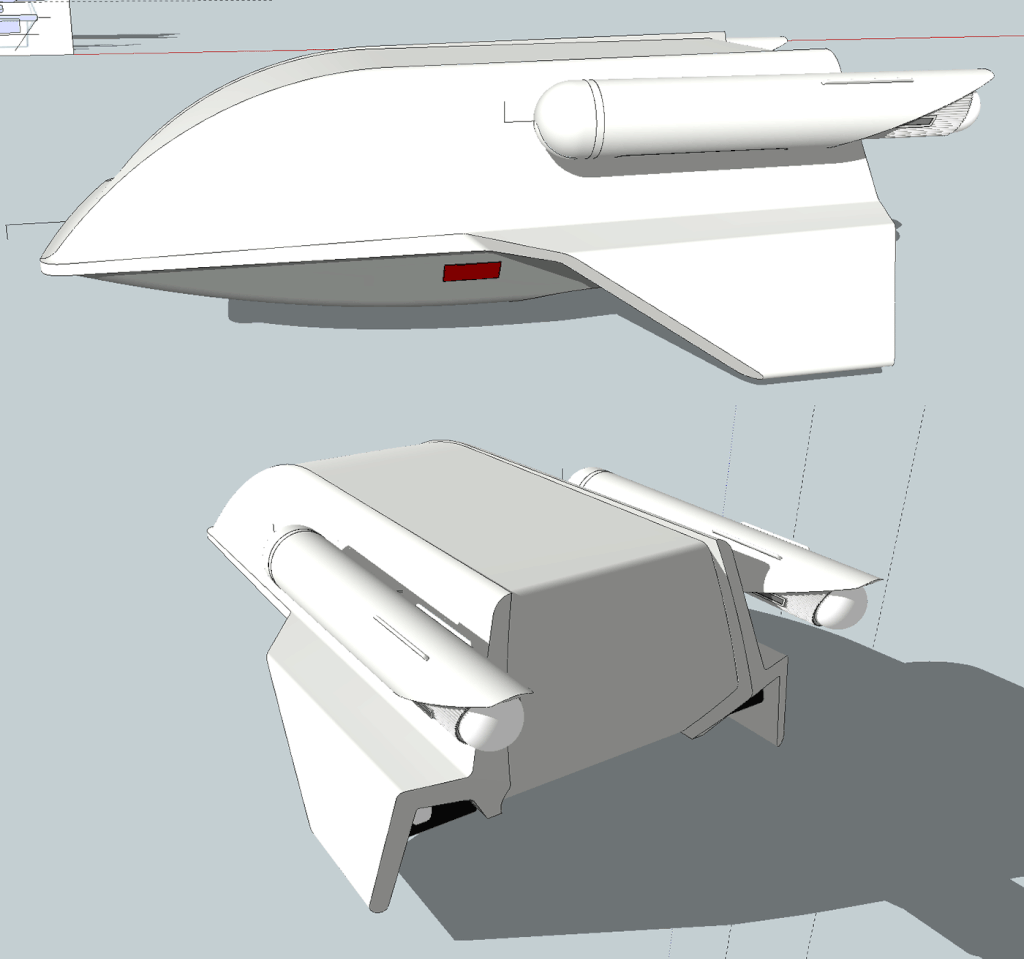
Regarding the nacelles. They're a bit thicker than those of the Class F as well as obviously shorter. Moving the nacelles up a bit as I have as well as beginning to add detail serves to lengthen them visually because they end up looking as if they extend further beyond the trailing angled edge of the hull. Making them actually longer throws the visual balance off (in my opinion) and also begins to defeat my trying to keep the overall size down.
Another note regarding the Class F nacelles. Those also serve the purpose of supporting the shuttlecraft including the fact that some of the nacelle is taken up by the forward retracting landing pad. So shortening and thickening the nacelle for this new design works visually while not really changing the nacelle's volume much I would think.
Because of the shape of the nose I'm carrying over what I did with the other designs in that there are no actual forward viewports. Instead you have a 3D display monitor on the forward bulkhead that mimics a large viewport (or any display required) exactly like that seen on the Enterprise bridge. By this time this is proven technolgy and no one would think anything odd about. This craft is, like other shuttlecraft we've seen, a small scale starship capable of extended interstellar flight so it has many of the same elements albeit on a smaller scale. Because of the shape of the bow you can't bring the interior cabin all the way to the nose anyway so even if you have viewports you're going to be seated a long way from them. That would be a lot of wasted space so better to use the space more effectively and fill it with sensor arrays and navigational deflectors and systems.
The interior cabin will somewhat mimic the shape of the exterior hull except it will have walls parallel running fore to aft rather than angling outward (at one degree on each side) like the exterior hull does. Also the inner walls will likely be less steeply angled than the exterior hull. All this contributes to sufficient space between hulls for mechanicals and storage compartments similarly as I did with the Class F design.
When I initially designed this craft I worked out the basic layout literally right on top of the Class F in order to help constrain the overall size. Because of the shape and the rearranging of some elements it affords a bit more interior room than the Class F. Seen in profile the Class F looks like it should be roomy given it's rather box like shape, but you lose interior space because of the sloping roof, the impulse engines in the rear and the aft hull cutout under the impulse engines. By putting the impulse engines under the stabilizers and moving the access hatch aft I reclaim that lost space.
Slowly adding more detail, particularly to the nacelles. I've also raised the nacelles a bit by aridas' suggestion (although not as much as I suspect he was thinking). (-: I tried them higher but I just didn't think it looked right on this design. I also rounded off the trailing edge of the roof more and I changed the aft nacelle domes more to my liking.

Regarding the nacelles. They're a bit thicker than those of the Class F as well as obviously shorter. Moving the nacelles up a bit as I have as well as beginning to add detail serves to lengthen them visually because they end up looking as if they extend further beyond the trailing angled edge of the hull. Making them actually longer throws the visual balance off (in my opinion) and also begins to defeat my trying to keep the overall size down.
Another note regarding the Class F nacelles. Those also serve the purpose of supporting the shuttlecraft including the fact that some of the nacelle is taken up by the forward retracting landing pad. So shortening and thickening the nacelle for this new design works visually while not really changing the nacelle's volume much I would think.
Last edited:
I've hit a bit of a lull where I'm contemplating what sort of finer details to add. I'm also trying to add a limited amount of lighting effects.
As far as I know the fullsize Galileo mockup did not have impulse engines that lighted as the miniature replica did. Instead it had a working access hatch (which was operated manually I understand). There had been lighting effects planned for the fullsize mockup, but they were never installed. The nacelles domes were intially to be lighted and perhaps in a similar spinning effect as seen on the 11 ft. Enterprise. There were also landing lights planned (those two rectangles under the bow), but they were never used either.
I am going to try adding some lighting to my nacelles to give the model a bit more life. One thing I'm definitely going to resist is all the greeble like detail that became common in Star Wars as well as TMP and later.
As far as I know the fullsize Galileo mockup did not have impulse engines that lighted as the miniature replica did. Instead it had a working access hatch (which was operated manually I understand). There had been lighting effects planned for the fullsize mockup, but they were never installed. The nacelles domes were intially to be lighted and perhaps in a similar spinning effect as seen on the 11 ft. Enterprise. There were also landing lights planned (those two rectangles under the bow), but they were never used either.
I am going to try adding some lighting to my nacelles to give the model a bit more life. One thing I'm definitely going to resist is all the greeble like detail that became common in Star Wars as well as TMP and later.
I've worked out a scale and got some starting measurements. With a 6'-1" ceiling inside my craft comes out to a shade over 28'-2" L.O.A. That's about a foot longer than my Class F model and actually shorter than my Class H variant. The overall height is almost the same as my Class F. I don't know about the width yet, but it should also be close to the Class F.
If this concept works out then I could see this as a better shuttlecraft variant than my TOS based version and it could serve as the "real" Copernicus and be sized right to be part of the Enterprise standard shuttlecraft complement.
In more real world terms if by some remote chance TOS had had the opportunity in later seasons to build another shuttlecraft why bother with something very similar to what you already have (the Class F) when it would make more sense to invest your time and resources into something new and different?
If this concept works out then I could see this as a better shuttlecraft variant than my TOS based version and it could serve as the "real" Copernicus and be sized right to be part of the Enterprise standard shuttlecraft complement.
In more real world terms if by some remote chance TOS had had the opportunity in later seasons to build another shuttlecraft why bother with something very similar to what you already have (the Class F) when it would make more sense to invest your time and resources into something new and different?
Similar threads
- Replies
- 2
- Views
- 3K
- Poll
- Replies
- 4
- Views
- 2K
If you are not already a member then please register an account and join in the discussion!


